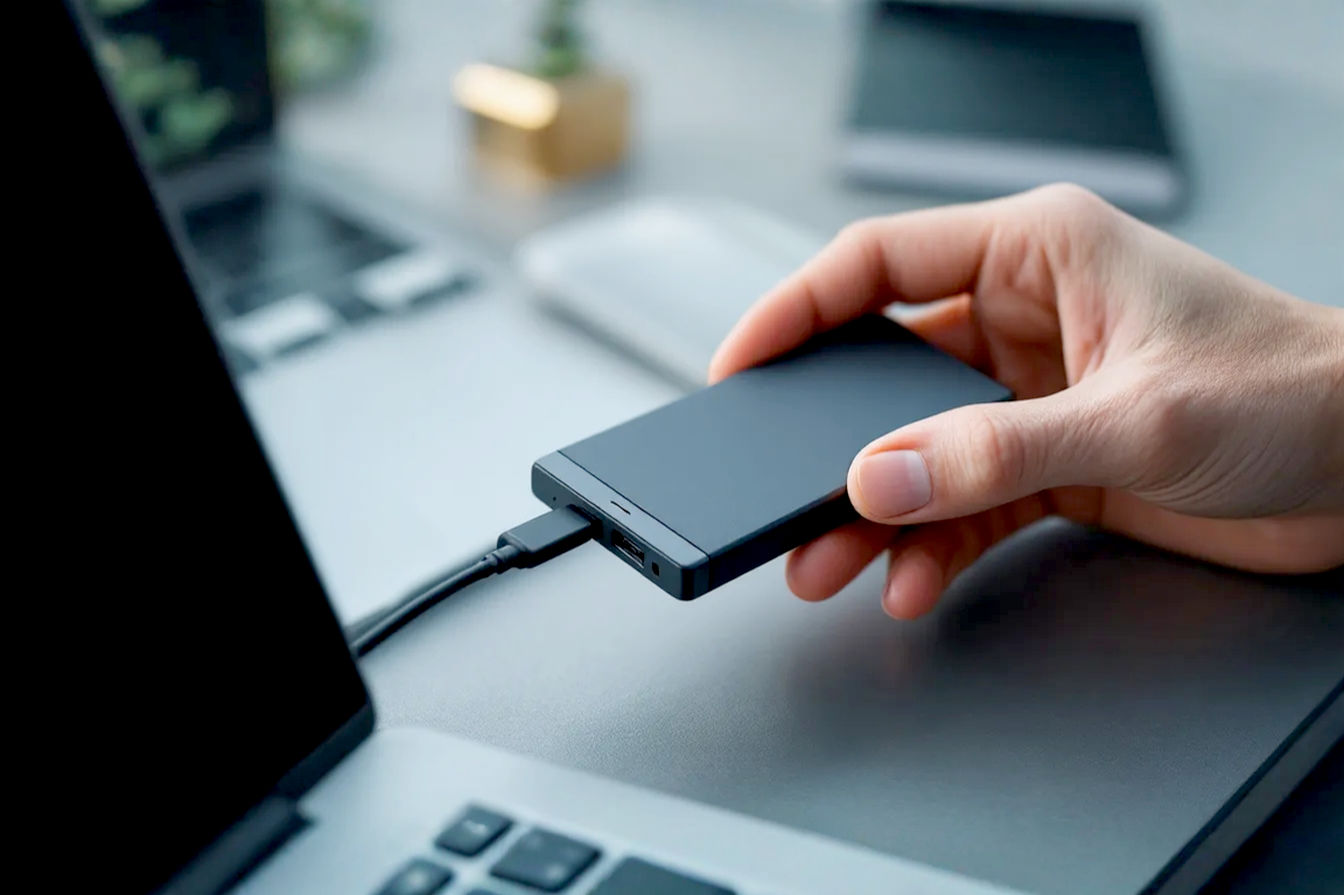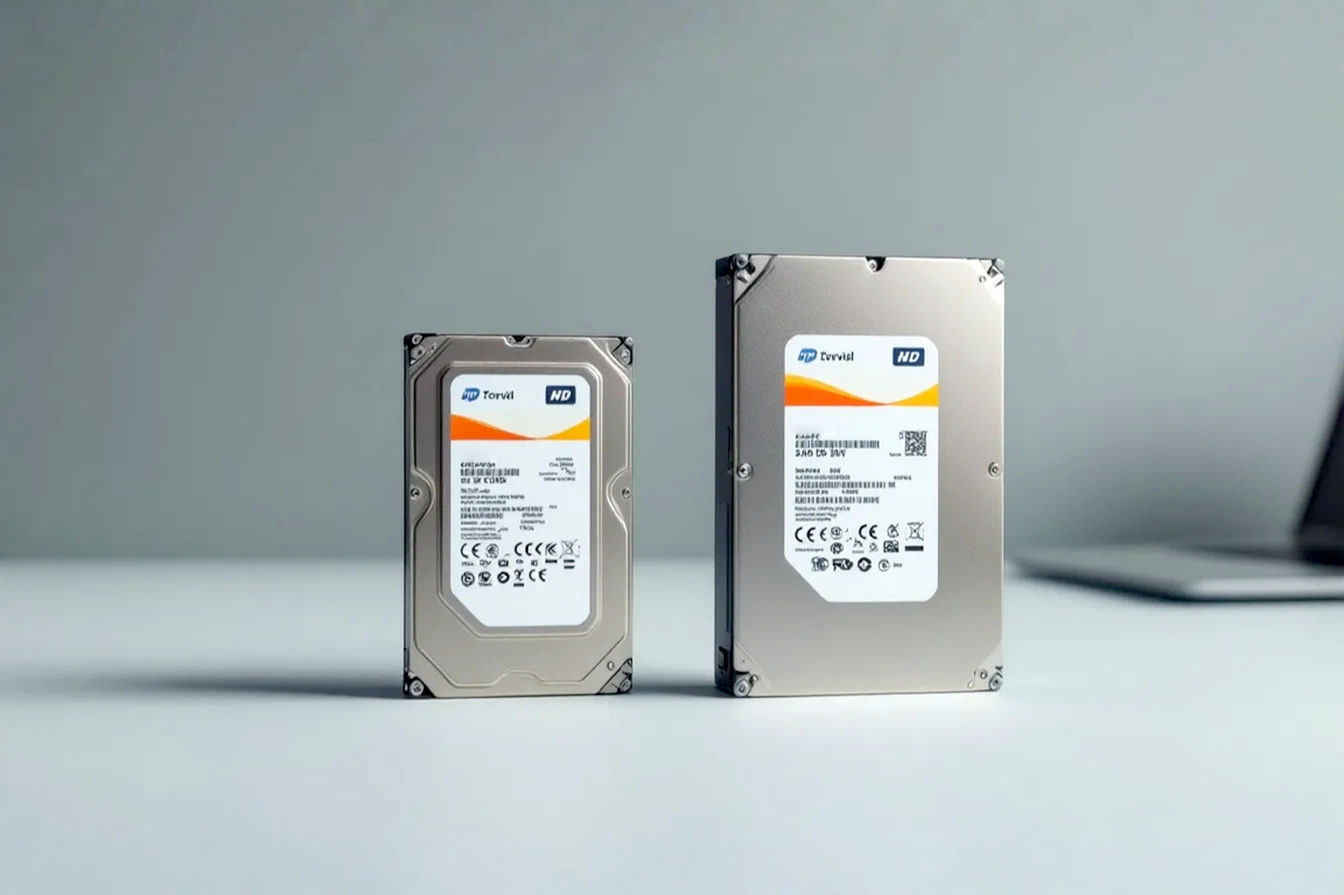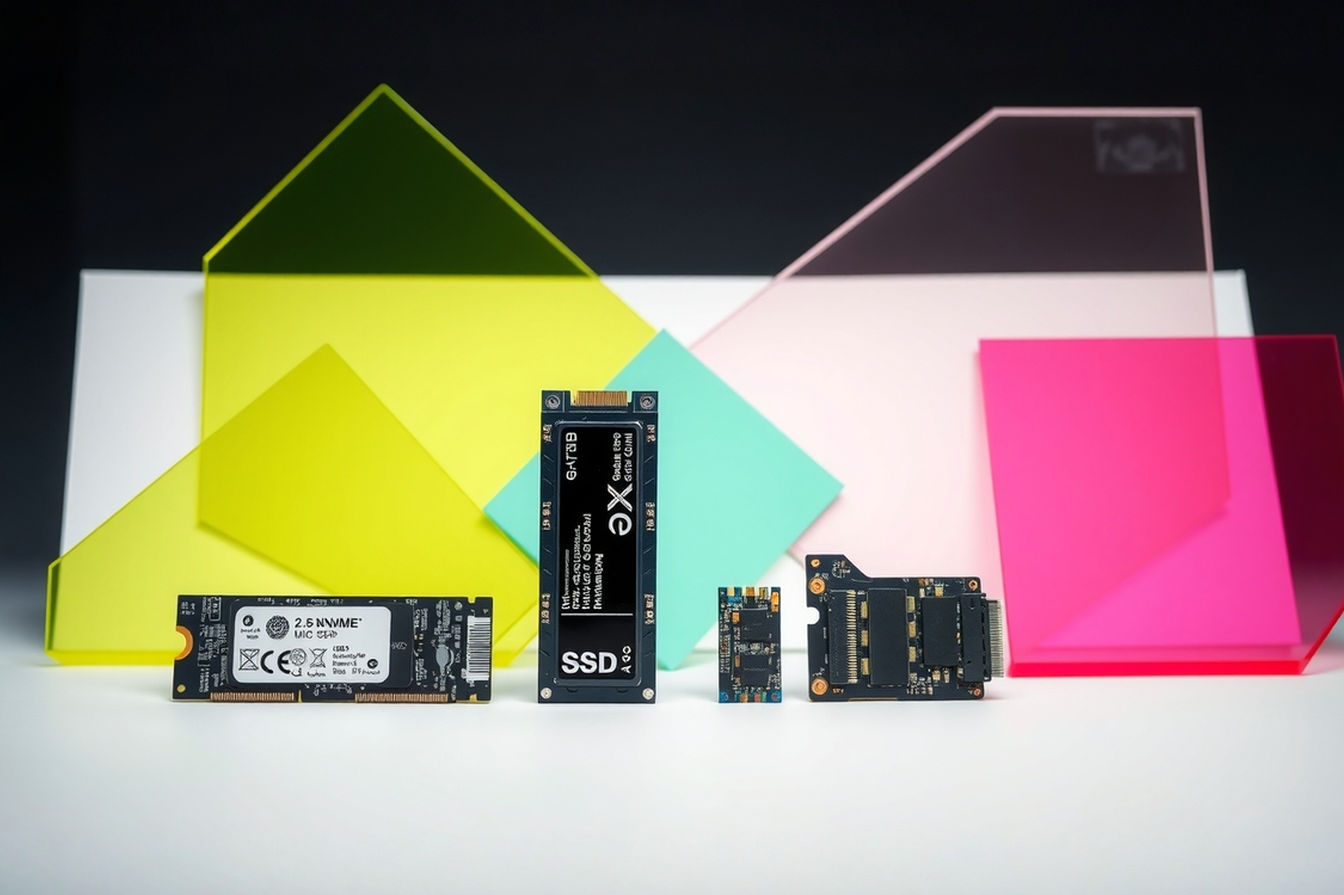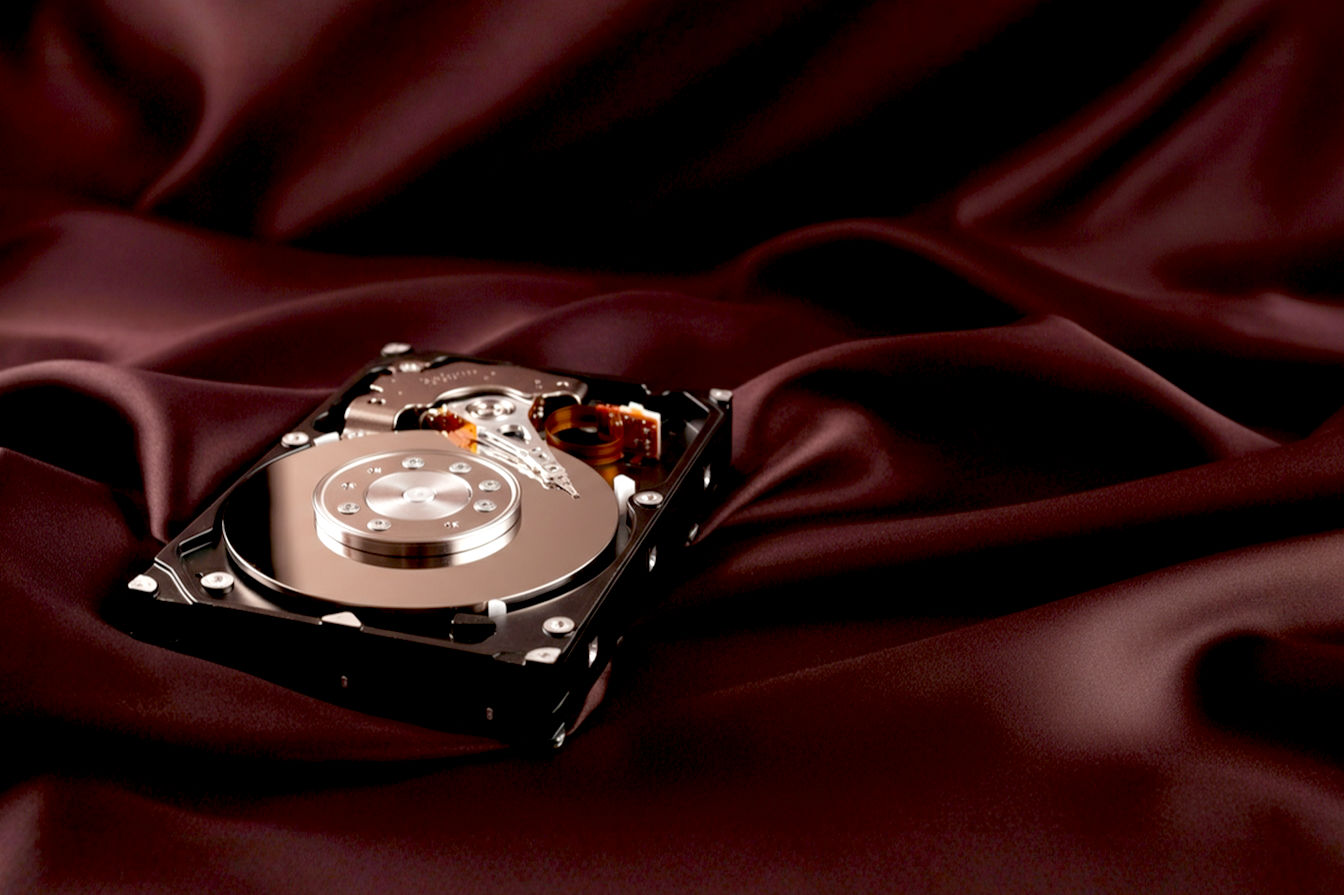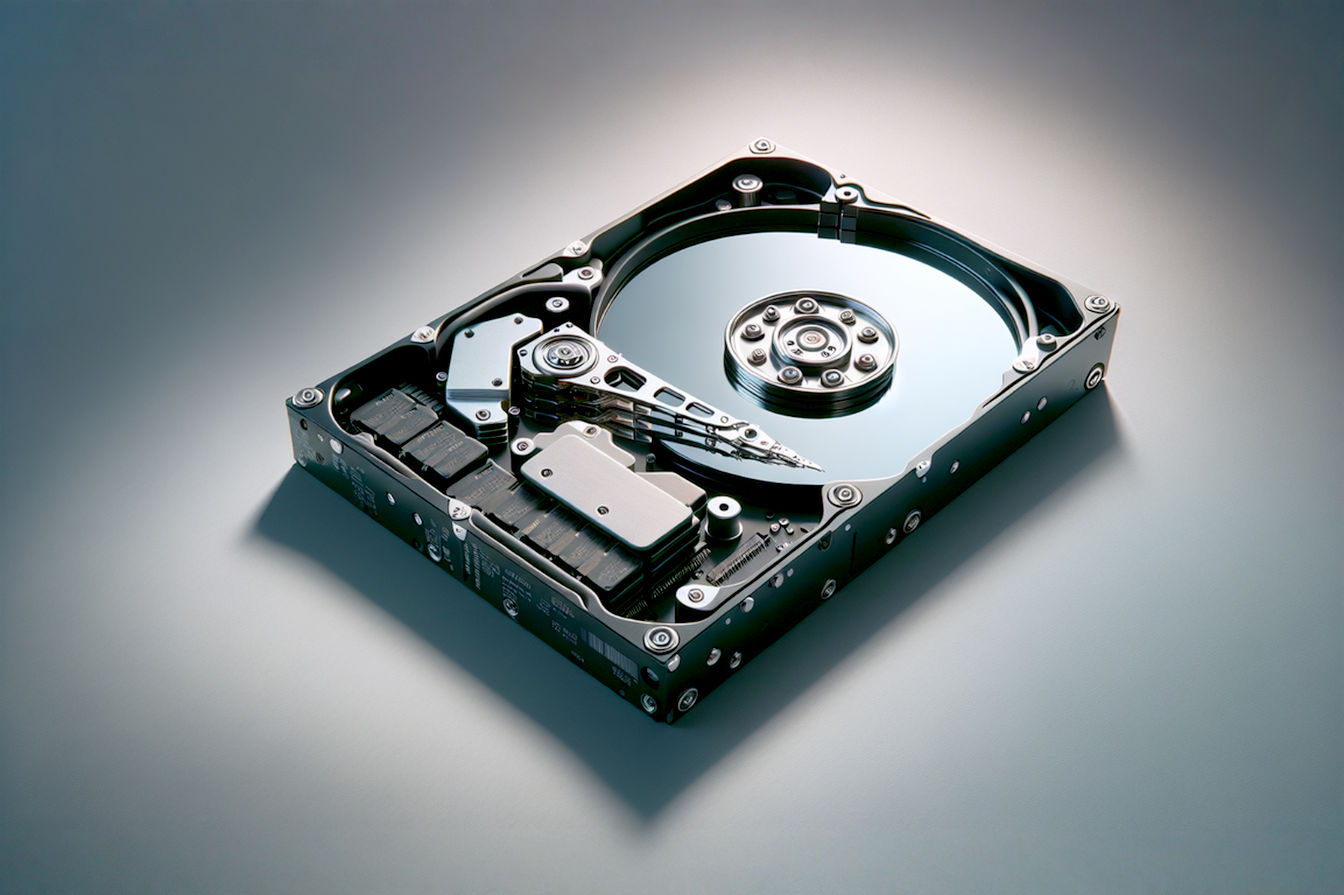This post may contain affiliate links. If you make a purchase through these links, we may earn a commission at no additional cost to you.
Running out of storage space on your computer or phone is incredibly frustrating, isn’t it? You’re trying to save a new file, install an app, or maybe just update your operating system, and bam! A dreaded message pops up: “Disk Full.” Suddenly, everything grinds to a halt. You can’t create, you can’t save, and you definitely can’t ignore it. This isn’t just an inconvenience; it can slow down your device, prevent important updates, and even put your precious photos and documents at risk if you can’t back them up.
In our increasingly digital lives, we’re creating and collecting more data than ever before. High-resolution photos, 4K videos, massive game installations, and countless documents quickly eat up the built-in storage on our devices. What felt like plenty of space just a few years ago now seems laughably small. The good news is that solving this problem doesn’t have to be a massive headache or require hours of complicated file management. Often, the quickest and most effective solution is simply adding more space. And for many people, a 2 terabyte (TB) storage solution offers the perfect blend of capacity, affordability, and ease of use to fix that “out of space” crisis fast. While the full process of moving everything might take longer, deciding on and getting a 2TB drive can genuinely be the “15-minute fix” that sets you on the path to digital freedom.
Understanding 2 Terabytes: How Much Space Is That, Really?
Okay, let’s talk numbers. What exactly does 2 terabytes mean in practical terms? We hear terms like bytes, kilobytes (KB), megabytes (MB), gigabytes (GB), and terabytes (TB) thrown around a lot, but it can be hard to visualize the sheer scale.
Think of it like this:
- A byte is the smallest unit, like a single letter or number.
- A kilobyte (KB) is about a thousand bytes. A very short text email might be a few KB.
- A megabyte (MB) is about a million bytes, or a thousand KB. A standard-resolution photo might be 1-5 MB. A short song (MP3) could be 3-5 MB.
- A gigabyte (GB) is about a billion bytes, or a thousand MB. This is where things start getting bigger. A high-definition movie download might be 4-8 GB. A modern video game can easily be 50-100 GB or even more. Most computer and phone storage is measured in GBs.
- A terabyte (TB) is about a trillion bytes, or a thousand GB. So, 2 TB is roughly 2000 gigabytes.
To put 2 TB into perspective with common files:
- Photos: If an average high-resolution photo is about 5 MB, 2 TB could hold roughly 400,000 photos. That’s a lifetime of memories for most people.
- Videos: A minute of 4K video can take up around 350 MB. 2 TB could store over 95 hours of 4K video. If you’re editing videos or storing lots of family footage, that space disappears quickly.
- Documents: A typical document is only a few KB or MB. 2 TB could hold millions of documents.
- Music: If an average song is 4 MB, 2 TB could store about 500,000 songs. That’s over three years of non-stop music playback!
- Games: With game sizes increasing, 2 TB might hold anywhere from 20 to 40 large video games, depending on their size.
So, 2 TB is a significant amount of storage. For many users, it’s enough to store their entire digital life – operating system, applications, documents, photos, videos, music, and more – with plenty of room to spare for future growth. It’s a capacity point that offers substantial breathing room without jumping to much larger, often more expensive, enterprise-level storage solutions.
Is 2 TB the right amount for you? Consider how much space you’re currently using and how quickly you’re filling it up. If you’re constantly battling a full drive and dealing with large files like videos or high-res images, 2 TB is likely a solid, future-proof choice for the next few years. If your needs are minimal, 1 TB might suffice, but 2 TB offers a better buffer. If you’re a professional video editor or data hoarder, you might eventually need even more, but 2 TB is an excellent starting point to solve immediate problems and provide substantial capacity.
The “15-Minute Fix” Mindset: Quick Wins and Long-Term Solutions
The idea of a “15-minute fix” for running out of space might sound too good to be true, especially if you’re staring at a nearly full hard drive. And honestly, completely migrating all your data to a new 2 TB drive will definitely take longer than 15 minutes. The “15-minute fix” here refers to the speed at which you can decide on and initiate the process of acquiring and setting up a 2 TB solution, providing immediate relief and a clear path forward.
Before you even get to the 2 TB solution, there are some genuinely quick wins you can tackle in under 15 minutes to free up a little space immediately:
- Empty the Recycle Bin/Trash: Files you delete usually go here first. Permanently deleting them can free up surprising amounts of space. This takes seconds.
- Delete Temporary Files: Operating systems and applications create temporary files that aren’t always cleaned up properly. Using built-in disk cleanup tools (like Disk Cleanup on Windows or optimized storage settings on macOS) can quickly identify and remove these. Running this process might take a few minutes.
- Uninstall Unused Applications: Go through your list of installed programs. If you haven’t used an app in months or years, uninstall it. Some applications can take up several gigabytes. This might take 5-10 minutes depending on how many you need to remove.
- Clear Browser Cache and Data: Web browsers store lots of temporary internet files, cookies, and cache data. Clearing this can free up space, though usually not a massive amount unless you’ve never done it. This is a quick task, typically under 5 minutes.
- Check Your Downloads Folder: This is a common culprit for forgotten, large files. Sort by size and delete anything you no longer need. This can be done in a few minutes.
These quick steps can provide a temporary reprieve, maybe enough space to download that crucial update or save that urgent file. However, they don’t solve the root problem: you need more space permanently.
The real “15-minute fix” comes in when you decide that a 2 TB solution is necessary and you take the first steps to implement it. Within 15 minutes, you can:
- Identify Your Need: Acknowledge that you consistently run out of space and need a larger capacity solution.
- Choose a Solution Type: Based on your needs (portability, speed, accessibility, budget), quickly decide whether an external HDD, external SSD, cloud storage, or NAS is the best fit for a 2 TB capacity.
- Select a Specific Product/Service: Do a rapid search for well-regarded 2 TB options in your chosen category. Look at reviews and prices.
- Initiate Acquisition: Place an order online or plan a trip to a local store.
That decision-making process, researching options, and taking action to acquire the storage can absolutely be done within 15 minutes. Once the 2 TB solution is in your hands (or your cloud account is set up), the process of moving data begins, which takes longer. But the fix – the solution to the problem of not having enough space – starts with that quick decision and acquisition.
Now, let’s dive into the different types of 2 TB storage solutions available and how they can serve as your digital lifeboat.
Option 1: External Hard Drives (HDDs) – Portable and Affordable
External Hard Drives (HDDs) are perhaps the most common and budget-friendly way to add a large amount of storage to your computer. They use traditional magnetic storage technology, similar to the older hard drives found inside computers before SSDs became popular.
What They Are and How They Work
An external HDD contains one or more spinning platters coated in magnetic material. A read/write head, like the needle on a record player, moves across the platter to read data from or write data to tiny magnetic areas. This mechanism is enclosed in a protective casing with a connector (usually USB) to plug into your device.
Think of it like a record player storing digital information. The platters spin very fast (often 5400 or 7200 revolutions per minute – RPM), and the head moves precisely to access the data.
Pros and Cons of 2 TB External HDDs
Pros:
- Cost-Effective: This is their biggest advantage. 2 TB external HDDs offer the lowest cost per gigabyte compared to other options. You can often find a reliable 2 TB external HDD for under $80-$100.
- High Capacity: HDDs are available in very large capacities, making 2 TB a standard and easily accessible size.
- Widely Compatible: They work with almost any computer (Windows, macOS, Linux) and often with gaming consoles and smart TVs.
Cons:
- Speed: HDDs are significantly slower than SSDs. Accessing and transferring large files can take a noticeable amount of time. This is due to the mechanical nature of the spinning platters and moving head.
- Durability: Because they have moving parts, HDDs are more susceptible to damage from drops or bumps. A fall can cause the read/write head to crash into the platter, potentially destroying data.
- Size and Weight: While portable versions exist, they are generally bulkier and heavier than external SSDs.
- Power: Some larger desktop external HDDs require an external power adapter, not just power from the USB port.
Types of External HDDs
- Portable External HDDs: These are smaller, lighter, and powered solely through the USB connection. They are designed for easy transport and are great for backing up laptops or carrying files between locations. A 2 TB portable drive is a very popular choice.
- Desktop External HDDs: These are larger, require an external power supply, and are designed to stay in one place, usually connected to a desktop computer. They often offer higher capacities (4 TB, 8 TB, or more) and sometimes faster spindle speeds (7200 RPM vs. 5400 RPM for portable drives), but 2 TB desktop versions are also available, though less common than portable ones at this capacity.
Key Features to Look For
- USB Type: Look for drives with USB 3.0 (also known as USB 3.1 Gen 1 or USB 3.2 Gen 1) or newer (USB 3.1 Gen 2, USB 3.2 Gen 2, USB 4, Thunderbolt). USB 3.0 offers speeds up to 5 Gbps (Gigabits per second), which is a significant improvement over older USB 2.0 (480 Mbps). Faster USB standards offer even higher speeds. Ensure your computer also has compatible ports to get the maximum speed.
- Brand Reputation: Stick to reputable brands known for reliability, such as Western Digital (WD), Seagate, Toshiba, and Transcend.
- Warranty: A longer warranty (2-3 years is common) indicates the manufacturer’s confidence in the product.
- Included Software: Some drives come with backup software or encryption tools, which can be a useful bonus.
Using a 2 TB External HDD
Using an external HDD is usually very straightforward. You simply plug it into a USB port on your computer. The operating system should recognize it as a new drive. You might need to format it the first time you use it, but many come pre-formatted.
Once connected, you can drag and drop files onto it, use it as a destination for backup software, or install applications directly onto it if supported by the application and your OS. Transferring a large amount of data initially will take time, but the act of connecting it and starting the process is quick. For example, moving 500 GB of data to a USB 3.0 external HDD might take anywhere from 30 minutes to over an hour, depending on the drive speed and the type of files. But the “15-minute fix” is plugging it in and starting that transfer.
Option 2: External Solid State Drives (SSDs) – Speed and Durability
External Solid State Drives (SSDs) represent a newer, faster, and more robust option for expanding your storage. Unlike HDDs, they have no moving parts, relying instead on flash memory chips, similar to the storage in your smartphone or a USB flash drive, but much more advanced and higher performing.
What They Are and How They Work
An external SSD uses NAND flash memory to store data electronically. There are no spinning platters or moving heads. Data is written to and read from blocks of memory cells. This electronic process is significantly faster than the mechanical movement of an HDD.
Think of it like a giant, super-fast USB stick. Data is stored in silicon chips, allowing for near-instant access compared to waiting for a physical head to move to the correct spot on a spinning disk.
Pros and Cons of 2 TB External SSDs
Pros:
- Speed: This is the primary advantage. External SSDs offer dramatically faster read and write speeds than HDDs. This means files transfer much quicker, applications launch faster if stored on the SSD, and working with large files (like editing video) directly from the external drive is much more feasible. Speeds can range from 400 MB/s up to over 2000 MB/s (2 GB/s) for NVMe-based external SSDs using faster connections like USB 3.2 Gen 2×2 or Thunderbolt.
- Durability: With no moving parts, SSDs are far more resistant to drops, shocks, and vibrations than HDDs. This makes them ideal for portable use.
- Size and Weight: External SSDs are typically much smaller and lighter than external HDDs, often fitting easily into a pocket.
- Silent Operation: They make no noise, unlike the whirring or clicking sounds an HDD can make.
- Lower Power Consumption: SSDs generally use less power than HDDs, which can be beneficial when powered solely by a laptop’s battery.
Cons:
- Cost: The main drawback is price. 2 TB external SSDs are significantly more expensive than 2 TB external HDDs. While prices have dropped considerably, you’ll still pay a premium for the speed and durability. A 2 TB external SSD might cost anywhere from $120 to $300 or more, depending on the technology and speed.
- Lifespan (Write Cycles): While generally very reliable, flash memory has a finite number of write cycles (how many times data can be written to a cell) before it wears out. However, for typical consumer use, a modern SSD’s lifespan is measured in many terabytes written (TBW) and is far beyond what most users will reach before upgrading the drive or device anyway.
Key Features to Look For
- USB Type/Interface: This is crucial for speed. To take advantage of SSD speeds, you need a fast connection.
- USB 3.2 Gen 2 (10 Gbps) is common and offers speeds up to around 1000 MB/s.
- USB 3.2 Gen 2×2 (20 Gbps) offers speeds up to around 2000 MB/s, but requires a compatible port on your computer.
- Thunderbolt 3 or 4 (40 Gbps) offers the fastest potential speeds, but drives and ports are less common and more expensive.
- Ensure the drive’s actual read/write speeds (listed in MB/s) are close to the theoretical maximum of the interface to ensure you’re getting good performance.
- NAND Type: While technical, knowing the type of NAND flash (SLC, MLC, TLC, QLC) gives an idea of durability and speed, though controller technology is also a major factor. TLC and QLC are most common in consumer drives, balancing cost and performance.
- Brand Reputation: Again, stick to trusted brands like Samsung, Crucial, SanDisk, WD, and Seagate.
- Durability Ratings: Some ruggedized external SSDs come with IP ratings (like IP68 for water and dust resistance) and drop resistance specifications.
Using a 2 TB External SSD
Using an external SSD is just as easy as an external HDD – plug it in via USB. The difference is in the experience. Transferring large files or folders is dramatically faster. If you’re moving hundreds of gigabytes of photos or videos, the time savings are substantial.
For example, moving 500 GB of data to a fast USB 3.2 Gen 2 external SSD could take as little as 5-10 minutes, depending on the drive’s speed and the type of files. This speed makes the “15-minute fix” feel even more achievable, as the actual data transfer is much quicker after the initial setup. You can also run demanding applications or even operating systems directly from a fast external SSD with performance comparable to, or even better than, an older internal drive.
Option 3: Cloud Storage – Accessible Anywhere
Cloud storage offers a fundamentally different approach to the “running out of space” problem. Instead of connecting a physical device, you store your data on remote servers maintained by a third-party provider, accessing it over the internet.
What It Is and How It Works
Cloud storage services operate vast data centers filled with servers and storage drives. When you use cloud storage, you upload your files to these servers. You can then access, manage, and share these files from any device with an internet connection – your computer, phone, tablet, or even a web browser.
Think of it as renting a secure locker in a giant, globally accessible warehouse for your digital stuff. You don’t own the building or the locker itself, but you have a key (your login credentials) to access your designated space whenever you need it.
Pros and Cons of 2 TB Cloud Storage
Many cloud storage providers offer plans that include 2 TB of space, often for a monthly or annual subscription fee.
Pros:
- Accessibility: Access your files from anywhere, on any device, as long as you have internet access. This is a major advantage for collaboration and working across multiple devices.
- Automatic Backup: Most cloud services offer automatic syncing and backup features. Once set up, files you save to designated folders on your computer are automatically uploaded to the cloud, providing an offsite backup.
- No Hardware to Manage: You don’t need to buy, carry, or worry about losing or damaging a physical drive. The provider handles all the hardware maintenance and redundancy.
- Easy Sharing: Sharing files and folders with others is typically very simple, often just requiring sending a link.
- Scalability: It’s usually easy to upgrade or downgrade your storage plan as your needs change.
Cons:
- Ongoing Cost: Unlike buying a physical drive once, cloud storage requires a recurring subscription fee. Over time, this cost can exceed the price of a physical 2 TB drive.
- Internet Dependence: You need a reliable internet connection to access and sync your files. If your internet is slow or unavailable, accessing large files can be difficult or impossible.
- Speed (Upload/Download): Transfer speeds are limited by your internet connection’s upload and download speeds, which are often much slower than local file transfers to an external drive. Uploading 2 TB of data can take a very long time, potentially days or weeks depending on your connection.
- Privacy and Security Concerns: While providers invest heavily in security, you are entrusting your data to a third party. Users concerned about privacy might prefer local storage.
- Initial Sync Time: Syncing a large existing library of files (potentially hundreds of gigabytes or terabytes) for the first time can take a significant amount of time, far exceeding 15 minutes.
Popular 2 TB Cloud Options
Several major companies offer 2 TB cloud storage plans:
- Google Drive: Often part of Google One subscriptions, which can include other benefits. Integrates well with Google Workspace apps.
- Microsoft OneDrive: Often bundled with Microsoft 365 subscriptions. Integrates well with Windows and Microsoft Office apps.
- Dropbox: A popular, user-friendly option known for reliable syncing across platforms.
- Apple iCloud: Primarily for Apple users, offering seamless integration across iPhone, iPad, and Mac.
- Other options: Box, pCloud, Sync.com (often emphasize privacy/security).
Using 2 TB Cloud Storage
Using cloud storage typically involves installing a desktop application that creates a synced folder on your computer. Files you place in this folder are automatically uploaded to the cloud. You can also access files via a web browser or mobile app.
The “15-minute fix” aspect here involves signing up for a 2 TB plan and installing the sync application. You can start directing new files to the synced folder immediately. The full process of uploading your existing mountain of data will take much longer, limited by your upload speed. However, the solution is initiated quickly, and new data can be managed easily.
Option 4: Network Attached Storage (NAS) – Home Server Power
Network Attached Storage (NAS) is a more advanced solution that essentially puts a dedicated storage device onto your home or office network. It’s like having your own private cloud or file server accessible to multiple devices.
What It Is and How It Works
A NAS is a small computer specifically designed for storing and serving files. It connects to your router via an Ethernet cable, making it accessible to any device connected to your local network (via Wi-Fi or Ethernet). NAS devices typically have bays for one or more internal hard drives (or SSDs). You buy the NAS enclosure and then add the drives yourself.
Think of it as a mini-computer whose main job is managing a pool of storage that everyone on your network can access. It has its own operating system, often managed through a web browser interface.
Pros and Cons of a NAS (Configured for 2 TB or More)
While you can configure a NAS with a single 2 TB drive, they are often used with multiple drives for larger capacities and data redundancy (like RAID, which we’ll explain simply).
Pros:
- Centralized Storage: Provides a single location for all your files, accessible by multiple computers, phones, smart TVs, etc., on your network.
- Excellent Backup Capabilities: NAS devices excel at automated backups from multiple devices. Many support RAID configurations (like RAID 1, mirroring data across two drives) to protect against a single drive failure.
- Media Streaming: Many NAS devices can act as media servers (using protocols like DLNA or applications like Plex), allowing you to stream your movies, music, and photos to smart TVs, game consoles, and mobile devices.
- Remote Access: Most NAS platforms offer ways to access your files over the internet, similar to a personal cloud, without ongoing subscription fees (though performance depends on your internet upload speed).
- Expandability: Most NAS enclosures have multiple drive bays, allowing you to increase storage capacity later by adding more drives.
Cons:
- Cost: A NAS is typically the most expensive option initially. You buy the enclosure and then the drives separately. A basic 2-bay enclosure plus two 2 TB drives will cost significantly more than a single 2 TB external drive.
- Complexity: Setting up a NAS is more involved than plugging in an external drive or signing up for cloud storage. It requires some technical comfort with network configuration and managing the NAS operating system.
- Requires Power and Network: The NAS needs to be plugged into power and your router constantly to be accessible.
- Performance Varies: Speed depends on the NAS processor, the drives used, your network speed (Wi-Fi is slower than Ethernet), and the number of users accessing it simultaneously.
Considering a 2 TB NAS
For a 2 TB total capacity, you could use a single-bay NAS with one 2 TB drive, or a two-bay NAS with two 1 TB drives configured in RAID 1 for redundancy (meaning the same data is written to both drives, so if one fails, you still have your data on the other). The latter is a common approach for data safety.
Using a NAS
Once set up and configured, accessing files on a NAS is usually done through network shares (like a shared folder on your computer) or dedicated mobile/desktop applications provided by the NAS manufacturer (like Synology or QNAP).
The “15-minute fix” here is less about immediate file access and more about the decision to invest in a centralized, robust storage system. Within 15 minutes, you can decide on a NAS model and drive configuration (e.g., a 2-bay NAS with two 1 TB drives for 1 TB of protected storage, or two 2 TB drives for 2 TB of protected storage) and place the order. The actual setup and data migration will take considerably longer and require more technical effort than the other options.
Choosing the Right 2 TB Solution for Your Needs
With several viable 2 TB storage options available, how do you pick the best one for you? It comes down to matching the solution’s strengths to your specific needs and priorities.
Consider these factors:
- Budget: External HDDs are the cheapest. External SSDs are faster but cost more. Cloud storage has ongoing subscription costs. NAS has the highest initial hardware cost.
- Speed: External SSDs are the fastest for local access. NAS speed depends on network and hardware. Cloud speed depends on your internet connection. External HDDs are the slowest.
- Portability: Portable external HDDs and external SSDs are designed for easy transport. Desktop HDDs and NAS are not portable. Cloud storage is accessible anywhere with internet.
- Accessibility: Cloud storage offers access from any device, anywhere. NAS offers access from any device on your local network, with optional remote access. External drives require being physically connected to a device.
- Ease of Use: External drives are plug-and-play. Cloud storage setup is usually straightforward. NAS setup is the most complex.
- Backup Needs: Cloud storage provides offsite backup. NAS excels at local network backups and can offer redundancy. External drives are great for manual backups or use with backup software.
- Primary Use Case:
- Need portable space for large files or backups on the go? External Portable HDD or SSD.
- Need fast access for video editing or running applications externally? External SSD (with a fast connection).
- Need an affordable way to archive lots of data? External HDD.
- Need access to files from multiple devices and automatic offsite backup? Cloud Storage.
- Need centralized storage, robust local backups for multiple computers, and media streaming? NAS.
Here’s a simple comparison table:
| Feature | External HDD | External SSD | Cloud Storage | NAS (2TB Config) |
| Initial Cost | Lowest | Medium-High | Low (Subscription) | Highest |
| Ongoing Cost | None | None | Monthly/Annual Fee | Electricity, occasional drive replacement |
| Speed | Slowest | Fastest (Local) | Depends on Internet | Depends on Network/Hardware |
| Portability | Portable models good | Excellent | N/A (Accessible) | Not Portable |
| Durability | Vulnerable to drops | Very Durable | N/A (Provider handles) | Depends on enclosure/drives |
| Accessibility | Needs physical connection | Needs physical connection | Anywhere w/ Internet | Local Network (+ Remote) |
| Setup Ease | Easy | Easy | Easy | Most Complex |
| Backup | Manual/Software | Manual/Software | Automatic Offsite | Automatic Local/Network, Redundancy |
Consider your current situation and how you plan to use the 2 TB of extra space. This will guide you to the right type of solution.
Implementing Your 2 TB Fix: Beyond the 15 Minutes
Once you’ve made your decision and acquired your 2 TB storage solution – the “15-minute fix” part – the next step is the actual implementation. This process will take longer than 15 minutes, but with your new storage ready, you’re well on your way to solving your space problems.
Setting Up the Chosen Solution
- External Drives (HDD/SSD): Plug it in. Your operating system should detect it. You might be prompted to format it. Formatting prepares the drive for use with your specific operating system (e.g., NTFS for Windows, HFS+ or APFS for macOS). Choose the recommended file system for your OS. This usually only takes a few minutes.
- Cloud Storage: Sign up for the 2 TB plan on the provider’s website. Download and install their desktop application. Log in, and the application will usually create a designated sync folder on your computer.
- NAS: This is the most involved. Unpack the NAS enclosure. Install the hard drives into the bays (this often involves screwing them in or using tool-less trays). Connect the NAS to your router via an Ethernet cable and plug in the power. Turn it on. Access the NAS’s web interface (usually by typing its IP address or a specific hostname into a web browser on a computer connected to the same network). Follow the setup wizard to configure the drives (set up RAID if using multiple drives), create user accounts, and set up shared folders. This process can take anywhere from 30 minutes to a couple of hours, not including the time it takes for the NAS to initialize drives or build a RAID array, which can take much longer.
Transferring Data
This is often the most time-consuming part, especially if you’re moving hundreds of gigabytes.
- Identify Data to Move: Figure out what’s taking up the most space on your current drive. Large folders like “Downloads,” “Documents,” “Pictures,” “Videos,” and application libraries are common culprits.
- Copy vs. Move: Decide if you want to copy files (leaving the originals in place for now) or move them (transferring and then deleting the originals). When freeing up space, you’ll eventually need to move and delete.
- Use File Explorer/Finder: The simplest method is dragging and dropping folders from your old location to the new 2 TB drive/cloud folder/NAS share using your operating system’s file manager (File Explorer on Windows, Finder on macOS).
- Use Backup Software: For more structured transfers or ongoing backups, use built-in OS backup tools (File History on Windows, Time Machine on macOS) or third-party backup applications.
- Cloud Syncing: For cloud storage, simply move files into the synced folder. The application will handle the upload in the background. Be patient, as large initial uploads take time.
- NAS Transfer: Copy files over the network to the shared folders on the NAS. For large transfers, a wired Ethernet connection will be much faster than Wi-Fi.
Transfer times will vary greatly depending on the amount of data, the speed of your old drive, the speed of your new 2 TB solution (especially crucial for external drives/NAS), and your network speed (for cloud/NAS). Be prepared for this step to take significant time.
Organizing Your New Space
With 2 TB of space, you have a fresh opportunity to get organized.
- Develop a Folder Structure: Plan how you want to categorize your files (e.g., by year, by project, by media type). A logical structure makes finding things easier.
- Be Consistent: Stick to your chosen structure and naming conventions.
- Delete Duplicates: As you transfer, try to identify and remove duplicate files to save space and reduce clutter. There are software tools that can help with this.
- Use Meaningful Names: Give files and folders clear, descriptive names.
Verification
After transferring large amounts of data, it’s a good idea to verify that the files were copied correctly and are readable on the new 2 TB storage. Spot-check important files and folders. If using backup software, check its logs to ensure the backup completed successfully.
Maintaining Your Storage: Keeping Space Free and Data Safe
Acquiring a 2 TB drive is a great solution, but it’s not a set-it-and-forget-it situation. To avoid running out of space again and to protect your valuable data, establish some good digital habits.
Regular Cleanup Habits
Make a habit of periodically reviewing your storage.
- Monthly Check: Set a reminder to quickly scan your main drives for large files you no longer need.
- Review Downloads: Clean out your Downloads folder regularly.
- Empty Trash/Recycle Bin: Don’t forget this simple step.
- Uninstall Unused Apps: Periodically check for software you no longer use.
Backup Strategies
Having a 2 TB drive is great for storing data, but it also makes a fantastic backup destination. Remember the 3-2-1 backup rule:
- 3 copies of your data: The original data, plus two backups.
- 2 different types of storage media: E.g., your computer’s internal drive, an external HDD/SSD, cloud storage, or a NAS.
- 1 offsite copy: At least one backup stored in a different physical location (like cloud storage or a backup drive kept at a friend’s house or work).
Your 2 TB drive can serve as one of the “2 different types” and potentially the “1 offsite copy” if you store it securely away from your home. A NAS can handle the “2 different types” locally and often facilitate the “1 offsite copy” via cloud sync features. Cloud storage is the offsite copy and one of the “2 different types.”
Implement an automated backup schedule using your operating system’s built-in tools or third-party software, backing up your most important files to your new 2 TB storage regularly.
Monitoring Storage Usage
Keep an eye on how much space you’re using on all your drives, including your new 2 TB solution. Knowing your usage patterns helps you anticipate when you might need more space in the future or if a particular type of file is consuming excessive space. Most operating systems provide graphical breakdowns of storage usage, showing which categories (apps, documents, photos, system files) are using the most space.
Physical Care for External Drives
If you chose an external HDD or SSD, treat it with care.
- Handle Gently: Avoid dropping or bumping the drive, especially when it’s connected and active (critical for HDDs).
- Properly Eject: Always safely eject or unmount the drive from your operating system before unplugging it. Pulling it out while data is being written can corrupt files or damage the drive.
- Keep Cool and Dry: Store the drive in a stable environment away from extreme temperatures and moisture.
By incorporating these maintenance steps, your 2 TB storage will remain a reliable solution for years to come, keeping your data safe and accessible.
Conclusion: Enjoying Your Newfound Digital Freedom
Running out of storage space is a modern-day headache, but it’s one with readily available, effective solutions. While the phrase “15-minute fix” captures the speed at which you can decide on and acquire a solution, the underlying reality is that adding a 2 terabyte storage device provides a substantial, long-term answer to the problem of digital clutter and capacity limits.
Whether you choose the affordability and capacity of an external HDD, the speed and durability of an external SSD, the accessibility and convenience of cloud storage, or the power and flexibility of a NAS, a 2 TB capacity offers significant breathing room. It’s enough space for most users to comfortably store their operating system, applications, and a vast library of personal files – photos, videos, music, and documents – with ample capacity remaining for future digital creations and collections.
Implementing your chosen 2 TB solution involves more than just 15 minutes of work, encompassing setup, data transfer, and organization. However, the initial decision and acquisition quickly turn a frustrating problem into a manageable project with a clear path to resolution.
By choosing the right 2 TB storage for your needs and adopting simple maintenance habits like regular cleanup and robust backups, you can leave the “disk full” notifications behind. Embrace the digital freedom that comes with having plenty of space, knowing your data is organized, accessible, and safe. A 2 TB solution isn’t just about adding capacity; it’s about restoring peace of mind and enabling your digital life to thrive without constraints.

